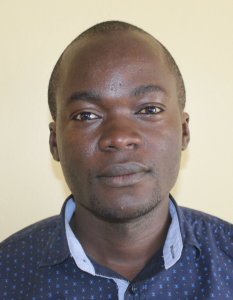Malekha Central Community is an area with a rural set up enclosed with rocks and hills. The landscape is geographically attractive for domestic and international tourists alike as it is believed to be ancestral lands. Modern ways of construction have not been adopted yet as there are still mostly the traditional, grass-thatched houses here. Agriculture is strongly embraced as sugarcane is planted on a large scale while maize, beans, and horticulture practiced on a small scale.
In Malekha Central Community, Misiko Spring serves as the primary water source for 354 people. But the spring is an open water source, leading to a continuous inflow of soil, waste products from animals, and even farm chemicals brought in with runoff from the rains.
Water from Misiko Spring is not fit for consumption, but without another option, families face high rates of water-related illnesses after drinking this water. People most frequently report cases of bilharzia, cholera, and typhoid after drinking this spring water, and jiggers from poor hygiene levels.
"For ages 'till now we are being hard hit by this major challenge; it has been difficult to regain all that has been lost for those who have suffered from the waterborne diseases like me. All our income has been used to finance the medical assistance we get. Our businesses have been greatly affected too; agriculture is also on the collapsing end as human labor has dropped" as a result of the high number of sick people, said 32-year-old farmer John Lumbasi.
When people are sick, they not only have to redirect financial resources to pay for treatment, but they also miss out on the energy and time needed for productive work. Children and adults are impacted in different ways, but both age groups are kept from their daily activities when they have to stay home because they are either sick or falling behind in personal hygiene.
"We have many things surrounding us that really affect our lives as pupils due to lack of enough clean and safe water," said primary school student Esther.
"Concentrating on academic work has been highly reduced compared to pupils from other areas, as we are always worried where we'll access clean water. It affects the academic performance of individuals, hence we get poor grades. Some are often absent from school as they can't do regular bathing. The hygiene standards are low as pupils cannot do normal manual cleaning due to lack of enough water."
Accessibility is the other major issue at Misiko Spring. The continuous siltation of the spring from the rains leads to the growth of water lilies, thereby reducing the area community members can access for water collection. And to fetch water, people must scoop water with small jugs or bowls to then pour into their larger jerrycans. The scoop-pour method is time-consuming and frustrating as crowds build up at the spring. If too many people try to fetch at once or too quickly in succession, extra mud is stirred up from the bottom of the spring. The containers people have to dip into the water also deposit any dirt and bacteria from the jugs and people's hands directly into the water they are collecting, further contaminating it.
What We Can Do:
Spring Protection
Protecting the spring will help provide access to cleaner and safer water and reduce the time people have to spend to fetch it. Construction will keep surface runoff and other contaminants out of the water. With the community’s high involvement in the process, there should be a good sense of responsibility and ownership for the new clean water source.
Fetching water is a task predominantly carried out by women and young girls. Protecting the spring and offering training and support will, therefore, help empower the female members of the community by freeing up more of their time and energy to engage and invest in income-generating activities and their education.
Training on Health, Hygiene, COVID-19, and More
To hold trainings during the pandemic, we work closely with both community leaders and the local government to approve small groups to attend training. We ask community leaders to invite a select yet representative group of people to attend training who will then act as ambassadors to the rest of the community to share what they learn. We also communicate our expectations of physical distancing and wearing masks for all who choose to attend.
The training will focus on improved hygiene, health, and sanitation habits in this community. We will also have a dedicated session on COVID-19 symptoms, transmission routes, and prevention best practices.
With the community’s input, we will identify key leverage points where they can alter their practices at the personal, household, and community levels to affect change. This training will help to ensure participants have the knowledge they need about healthy practices and their importance to make the most of their water point as soon as water is flowing.
Our team of facilitators will use a variety of methods to train community members. Some of these methods include participatory hygiene and sanitation transformation, asset-based community development, group discussions, handouts, and demonstrations at the spring.
One of the most important issues we plan to cover is the handling, storage, and treatment of water. Having a clean water source will be extremely helpful, but it is useless if water gets contaminated by the time it is consumed. We and the community strongly believe that all of these components will work together to improve living standards here, which will help to unlock the potential for these community members to live better, healthier lives.
We will then conduct a small series of follow-up trainings before transitioning to our regularly scheduled support visits throughout the year.
Training will result in the formation of a water user committee, elected by their peers, that will oversee the operations and maintenance of the spring. The committee will enforce proper behavior around the spring and delegate tasks that will help preserve the site, such as building a fence and digging proper drainage channels. The fence will keep out destructive animals and unwanted waste, and the drainage will keep the area’s mosquito population at a minimum.

 Protected Spring
Protected Spring
 Rehabilitation Project
Rehabilitation Project














































